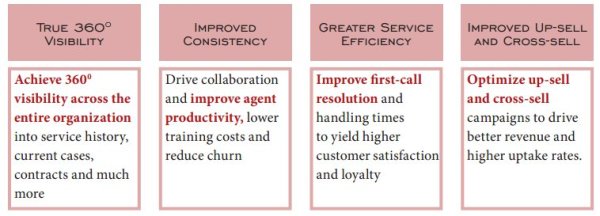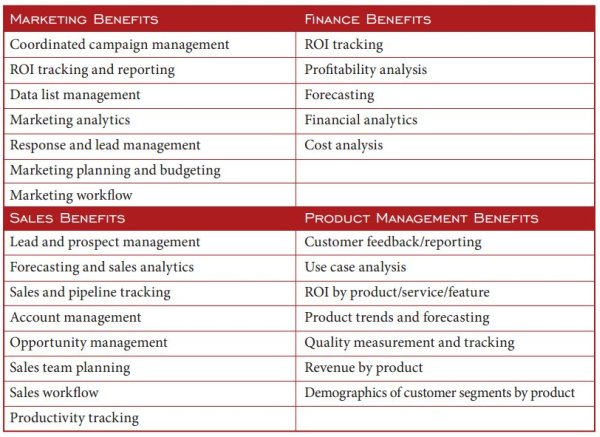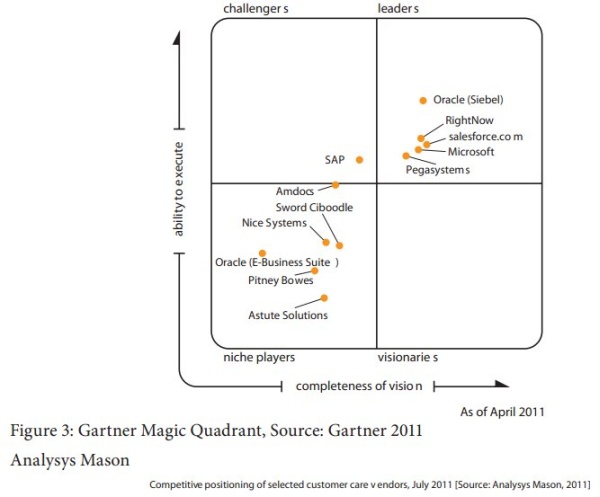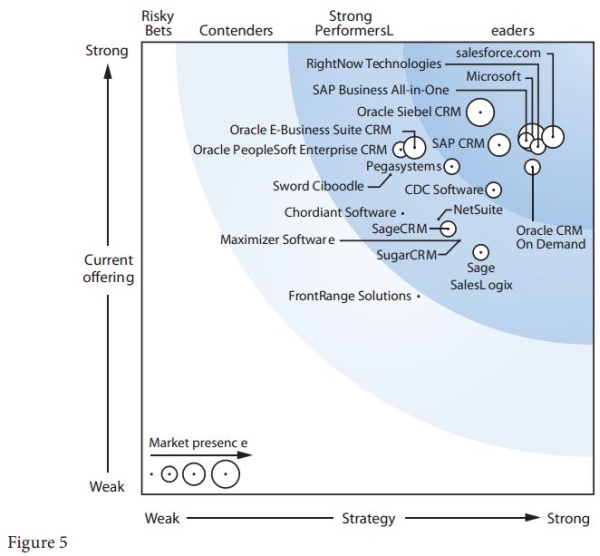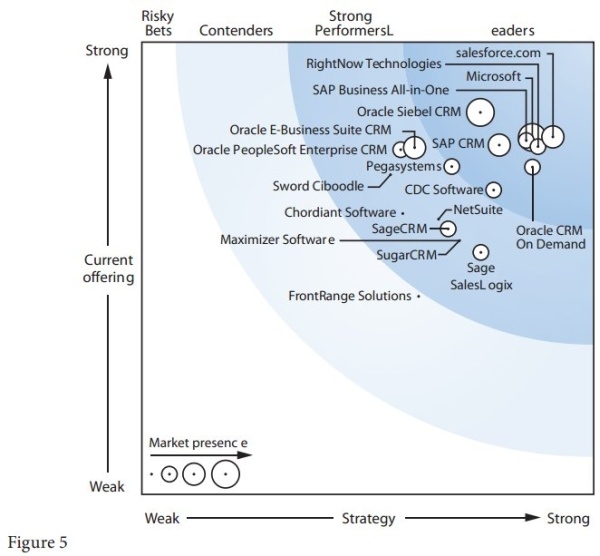For service providers today, Customer Relationship Management (CRM) is a combination of business policies, processes, and customer-facing strategies developed to improve customer relationships, increase revenue, and gather and analyze valuable customer data that can be leveraged across the organization.
However in the past, CRM solutions did not fulfill this definition. It did not bring together all the data related to customers, services, and the network. CRM solutions worked as a simple customer management interface, providing a way to access limited account information and deliver basic provisioning requirements.
This worked well when times were simpler. Service was limited to voice calls, applications just meant voicemail, and phones, a category that has expanded to what we now call ‘devices’, all basically followed a static set of rules with no complex scenarios.
The Evolution of CRM
Things have certainly changed. As new technologies and devices have surfaced CRM has grown increasingly complex. Services such as SMS and MMS were the first to come onto the scene, along with operator supported ’walled garden’ digital content such as ringtones and games. And initially, operators only focused on one type of service delivery – mobile, wireline, cable or Internet. Now many operators deliver all four.
Then smartphones were introduced, changing communications forever. Suddenly subscribers are sending emails, surfing the web, streaming video, downloading apps and uploading content to social media sites. Mobile broadband was introduced, and Wi-Fi hotspots can be created anywhere at any time.
Added Complexity – Struggling to Adapt
All of this change and added complexity has put an increased strain on customer care centers, which have been inundated with calls related to every imaginable issue- from handset features to new content charges on their bills, to provisioning requests and thousands more. Through all of this a newer brand of CRM was developed to help manage innovation and change, but it has had limitations of its own.
These specialized, stand-alone CRM systems were intended to help provide a unified view of each subscriber, regardless of their service, device, payment type or technology. However these systems are not integrated into the BSS layer, they simply provide a skeleton interface. As each new service or device is introduced, a separate customer record with its own screens and user interface has to be specially created and then integrated.
This is where many operators are today, with CRM systems that have been pieced together over time, resulting in cluttered desktops with multiple screens, and no overarching view of subscriber activity. Operators end up with separate systems requiring teams of specialists to manage the various devices and technologies.
For instance, when visual voicemail was introduced it required a new application in CRM with access to the visual voicemail system screens. This meant new training and expertise requirements, which translates to higher costs and time-consuming delays. Multiply this instance hundreds, even thousands of times over, and the results are not pretty. These specialized CRM systems have grown highly unwieldy over the years. They are expensive to maintain and operate, costing millions in customization and requiring costly training and teams of specialists in a field that is known for high turnover rates. Additionally, providing subscribers with fast answers to their customer care questions becomes increasingly difficult, if not impossible, in this environment.
Changing CRM – What it Means Today
Operators have moved beyond the age of mass marketing. The age where one size fits all, or as Henry Ford once put it, “A customer can have a car painted any color he wants, as long as it’s black.” Today’s subscribers have a multitude of choices that extend well beyond Mr. Ford’s proverbial ‘black’. While this adds to an operator’s back office complexity, it also provides many opportunities; opportunities for attracting new subscribers, for creating new revenue streams, and for becoming more profitable.
Out of this mindset, the industry’s heightened focus on the customer has been born. Along with this comes an urgent need for a more holistic, robust and agile CRM system. One that is fully integrated into the operator’s business support systems (BSS). In other words, operators need an entirely new breed of CRM that can help manage and fulfill this new customer-focused agenda. One that is as much a marketing and product management platform as it is a customer care platform.
From Challenge to Opportunity
Today’s service providers face a multitude of challenges, but out of these challenges arise opportunities. Opportunities for growth and new revenue streams, for communicating more effectively with subscribers, and for sharing and benefiting from this exciting time in the history of communications. It is undoubtedly changing the world.
Business Challenges
Operator business challenges include increasing competitive pressures, customer demands and changing technologies. This includes the ability to support new services and expand the customer base, increase ARPU, reduce churn and ensure profitability, certainly not an easy set of tasks.
Agility and Consistency
The ability to remain agile and adaptable is one of the biggest challenges operators face today. Having a system that supports this growth will be crucial, while providing the ability to keep the CRM layer consistent regardless of new technologies, without adding more complexity and clutter to the desktop. Operators need to remain agile and consistent in what they can offer in terms of new services, devices and technologies.
Customer Loyalty
Even though the market has consolidated over the years, competition for subscribers remains fierce. Personalized, relevant, and targeted communications and services help to build customer ‘stickiness’ or loyalty. Creating communications and marketing programs that are relevant for subscribers is what service providers are challenged with today.
Profitability
While many operators today are focused on ARPU, all too often profitability gets overlooked. Subscribers that may be considered ‘high value’, upon closer inspection may actually be costing service providers money instead. Maybe they are consuming extremely large amounts of data or bandwidth, or perhaps they routinely place weekly calls to customer service or regularly roam out of network. Whatever the issue, for operators to have an accurate picture of customer ‘value’ and profitability, they need a holistic view of subscriber behaviour- not just a single snapshot of one variable.
Revenue
Marketing departments cannot survive without accurate customer data. The more they have, the more effective the marketing mix. End-to-end visibility into subscriber behaviour and usage data through CRM driven business intelligence and analytics tools helps operators to target the right prospects, at the right time, with the right message. Campaigns and nurture programs that are built around solid customer information help operators stay a step ahead of their competitors, drive additional revenue and achieve a better return on their investment for the Marketing organization.
IT Challenges
With all the new technologies, applications, services and devices, the IT department can be left struggling to keep up. With the majority of CRM systems today, every new feature, service, and device needs to be painstakingly integrated to maintain a centralized view. And all too often specialized teams are required to support it. This gets costly and time consuming, and takes up valuable resources.
In addition, IT needs to support the changing needs of the business. Marketing teams often want to launch campaigns, but can IT support them? Without an integrated CRM, how long will it take to gather the data Marketing is asking for? How long will marketing have to wait before launching their campaign? Will it be delayed? Can it still meet corporate timelines and objectives? And with shrinking budgets and increasing maintenance costs, maintaining an outdated CRM is a costly burden that can negatively impact business well beyond customer care.
The Solution: Integrated Billing and CRM
Redknee and Microsoft Dynamics have partnered to deliver a robust, fully pre-integrated Billing and CRM system, resulting in Redknee’s Turnkey Converged Billing (TCB) with Microsoft Dynamics. Through this strategic alliance, Redknee is focused on providing value to its global telecom and IT service provider customers by leveraging Microsoft’s commitment to the telecom market, along with its ongoing $30 Billion investment in research and development.
This next generation of billing helps service providers combat all the challenges outlined above. It gives them greater agility to support new services, devices, and technologies, and gain a 360 degree view of subscriber activity, along with a powerful toolkit of business and customer analytics capabilities. It combines data elements from various business applications and displays it in a single unified agent desktop, with process automation and data connectivity across the applications. And it delivers a robust set of activity reports that can be leveraged across the organization. With over 30,000 registered users, Microsoft Dynamics is a trusted and proven solution.
Lower Total Cost of Ownership
Doing More With Less
Typical CRM projects involve over 1,000 days of customization, which can easily escalate to over $1M in additional costs. Service providers need to budget wisely, spending money where it counts. Redknee and Microsoft help operators ‘do more with less’ by providing greater out-of-the-box functionality, resulting in less customization and expense.
Approximately 80 percent of telecom processes are common between operators. Redknee has leveraged its 15+ years of real-time, carrier-grade billing expertise and developed a full set of standard workflows and processes based on this 80 percent, saving operators valuable time and money by reducing customization requirements.
Additionally, the solution is fully extensible to support non-standard business processes as well. Because Microsoft is common around the world, many operators already have programmers on-site and prefer to manage it themselves through commonly supported technologies such as Microsoft .NET, IIS, and SQL Server. For others, Redknee can support any required customization efforts.
Additional cost savings can also be achieved by reducing or eliminating many of the ad-hoc CRM systems that have been patched together over the years. With Redknee’s fully integrated solution, these add-on systems can be phased out, and software license and maintenance fees can be reduced.
The Importance of Usability
Redknee’s CRM integrates with all desktop environments, including Microsoft’s Office productivity suite. Its web-based user interface is intuitive and familiar to anyone who has worked with Microsoft products, drastically reducing call times because of its well-designed workflows and the fact that it is easy to use. This also means lower training costs and shorter staff ramp-up times. (See figure 1)
The solution provides native views and allows for personalized dashboards. With roles-based workflows and permissions, and template based ‘wizards’ for common CSR activities, customer care agents get the information they need, when they need it, without having to dig through reams of data from disparate systems. This reduces errors and call handling times, resulting in lower costs and happier customers.
For example, subscriber account activation time has been reduced, on average, by 210 seconds; with a reduction from an average of 48 mouse clicks per new activation to less than 12. Additionally, customer search functionality has been reduced from an average of 45 seconds to just five seconds. These seconds add up to significant cost savings and faster call resolution- which of course leads to greater customer satisfaction.
Order Management
The Redknee solution enables a full suite of order management capabilities, including workflows to manage complex activation ordering, physical installations, equipment reservations and allocations, fault resolutions, technical dispatch and on-site installations. Order Management also enables offline credit checks and facilities confirmations.
Business Process Automation
Greater efficiencies and automation is one of the benefits of Redknee’s TCB. Below are just a few of the telecom specific workflows that Redknee has created to manage such issues as:Future-Proof Your Customer Care Center
Because Microsoft Dynamics CRM is fully integrated into Redknee’s BSS platform, keeping pace with the constant introduction of new technologies, applications, devices and services becomes much simpler. This helps operators to ‘future-proof ’ their CRM; potentially saving millions in customization charges over time and simplifying the CRM desktop by linking all back office systems; greatly improving performance and streamlining business data for more accurate, consistent, and agile operations. This lets operators optimize their existing IT assets and frees up this valuable resource for other requirements. And for third party or custom built applications, Native Web Services/SOA makes integration easy.
In September 2011, Digicel Jamaica upgraded its CRM platform, which increased their customer satisfaction rating to 95 percent and increased first-call-resolution to 88 percent, and has allowed the operator to service more customers at a faster rate, and at a lower cost per call.
Growing the Business – Generating New Revenue Streams
Deliver Innovation
Redknee’s BSS platform, including the CRM component, provides valuable analytics and reporting tools with real-time visibility into what subscribers are doing on an operator’s network – how services and products are being used and consumed, and which promotions, products, and services are most popular amongst various customer segments, and how many movies or mobile games subscribers purchased. Operators also gain a better understanding of what time of day most services are being consumed and where the majority of Over the Top (OTT) content is originating from – and how much it’s costing you.
With all this valuable information at their fingertips, marketing and product management will have the necessary tools to help guide product, service and marketing decisions, helping to define which services should be introduced and which new products would have the highest likelihood of success.
Focus on Existing Customers
Customers are the most important element of every company. Service providers need to protect and invest in this asset, but how does an operator with millions of subscribers gain a real understanding of their customers? One of the best ways is through the Redknee TCB. By leveraging information from across the organization paired with built-in business intelligence, operators can instantly know information such as which customers are most profitable, which are likely to churn, which are their highest data users, which ones are likely to experience issues with their devices or service quality, which applications are the most popular and profitable, and which products or services particular subscribers are most likely to purchase based on historical activity.
Maximize Revenue Opportunities
Operators can take this information (and more) to build targeted communications, promotions and outreach with their subscribers. For example, offering up-sell and cross-sell campaigns that are aligned with a customer’s interests, or providing special incentives to the most profitable subscribers. Automatically send out Birthday greetings or launch a ‘customer loyalty’ rewards program to those who sign up for a new contract. By measuring everything in real-time, subscriber behaviour can be measured and acted upon. All of this is possible, and even necessary, in today’s climate of personalization.
Redknee’s TCB has a ‘quick campaign’ feature that lets users instantly create and execute impromptu marketing and sales campaigns. With over 1,000 useful templates and drag and drop ease, campaigns can be designed and tested one day, and launched the next.
Additionally, focusing on the basics of good customer service by equipping agents with access to key metrics and real-time subscriber information to help resolve problems on the first call is another way to improve customer experience. This information also provides potential upsell opportunities. With full subscriber data at hand, Customer Care Agents can suggest price plans, devices or services that might better a better fit for the customer. (See figure 2 below.)
Benefits across the Organization
Redknee’s TCB is much more than a customer care solution. As outlined below, it drives value across the entire organization for groups such as marketing, finance, sales, product management and networks. It automates business processes, including order management, workflow automation, and contract management, for an end-to-end view of the full customer lifecycle.
TCB also acts as a central repository for customer information and provides valuable analytics capabilities to help the operator better segment its customer base, plan for future network growth and capacity requirements, predict sales trends, understand margins and profitability, test new products and services, track marketing campaigns, and so on. The list is almost endless.
Technology and Reliability
A solid and reliable BSS platform is a critical component for every service provider. Redknee TCB provides the framework and tools for the systems integrator to use in integrating and automating the federated data architecture, the operations workflows that go beyond individual applications, and the customer care desktop. Redknee’s commitment to support open, service oriented architecture (SOA) interfaces allows the solution to integrate easily with other applications. It also enables reuse and composition, which is particularly powerful for creating new business processes quickly and reliably. SOA also provides the ability to alter existing business processes or other applications based on service aggregation, and it allows the system to be incrementally built.
Both Redknee and Microsoft are experienced, long-standing vendors in the telecommunications industry. By pairing Microsoft’s strengths in CRM technology and usability, along with Redknee’s strengths in real-time billing and its experience in large scale CRM projects, the resulting partnership has created a world-class product that is greater than the sum of its parts. In addition, Redknee’s partnership with Microsoft certified partner, TechMahindra, provides customers with worldwide coverage from one of the leading and most experienced CRM systems integrators.
Redknee TCB delivers:
- Robust business process engine
- Open SOA interfaces
- Open API layer
- Pre-integrated
- Fully scalable
- Point and click customization
- Multi language support
- Ongoing product updates and support from Redknee
- Customer Care Accelerator’- integrated user interface features
- Windows Workflow Foundation for process automation
- Windows Server AppFabric for caching and exposing services that help in integration, performance and scalability
Industry Recognition
Microsoft Dynamics CRM has been well received by the analyst community. The following information has been compiled from various analyst reports which have been made public on the Microsoft website.
Gartner
Gartner’s magic quadrant for CRM is an industry measurement of excellence, based on a set of measurable variables that help define the two key metrics, ability to execute and completeness of vision. Microsoft Dynamics CRM has been defined
as a ‘leader and visionary’ in the field. (See figure 3 below)
According to Forrester Research, “Microsoft Dynamics CRM provides strong support for: phone agents; call center infrastructure; agent collaboration tools; knowledge base; customer data management; analytics; email response management; architecture and platform; business process and workflow tools; integration; security; and Web 2.0 tools. It provides very strong support for: internationalization; deployment options; development and customization capabilities; scalability; reliability and availability; usability; UI; help; support for mobile devices; and offline support; Web 2.0-enabling technologies; and customization.” Forrester has put Microsoft firmly in the ‘Leaders’ Position for their CRM solution in the Forrester Wave matrix. (See figure 5 below)
In Conclusion
Organizations cannot afford to have an outdated Billing and CRM system in today’s environment of rapid change. Redknee’s TCB solution opens the door to new revenue streams and an easier integration of new technologies, devices and services; along with a wealth of real-time subscriber information to benefit the entire organization and ensure sustainable growth. The biggest risk is to do nothing. In order to remain competitive, agile, and responsive, service providers need a strategy that will position them for long-term success, along with the enabling tools necessary to focus on customers and better capitalize on new revenue opportunities.
Sources:
- Analysys Mason, July 2011- Microsoft Dynamics CRM’s ‘Mashable Ecosystem’ May Change the Telecoms Customer Care Market
- The Forrester Wave™: CRM Suites Customer Service Solutions, Q3 2010CRM Manifesto, v.1.9
- Press Release: New Microsoft Dynamics CRM Partners Set to Deliver Breakthrough Productivity for the Telecommunications Industry, March 7, 2011
- Microsoft Dynamics CRM / Customer Relationship Management: The Winning Strategy in a Challenging Economy, April 2009
- Gartner Magic Quadrant Report for CRM, April 2011
- Press Release: Digicel Provides 95% Customer Satisfaction Rate with Microsoft CRM Solution, Sept. 30, 2011
AUTHOR SUMMARY
Redknee .
Redknee
Redknee is a leading global provider of real-time converged billing and customer care software for service providers around the globe. We serve over 90 network operators in more than 50 countries, and our solutions include advanced converged billing, rating, charging, policy, and wholesale settlement for all subscriber types across any communication platform, including mobile, landline, broadband, cable and satellite.
The Power of an Integrated CRM

